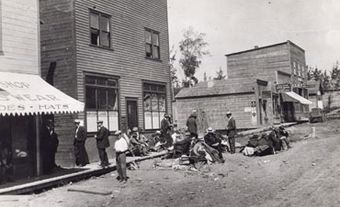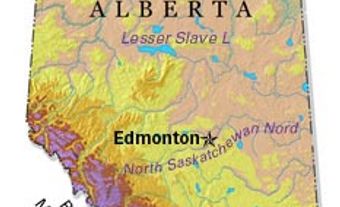Grande Cache, Alta, incorporated as a town in 1983, population 4319 (2011c), 3783 (2006c). The Town of Grande Cache is located 430 km northwest of Edmonton, on a mountain plateau near the confluence of the Smoky and Sulphur rivers.
In the early 1900s, native people from JASPER NATIONAL PARK relocated here. The Aseniwuche Winewak (meaning "Rocky Mountain people" in Cree) descended from Iroquois guides that led the fur traders to the west and later intermixed with the other native people of the area. The town was created in 1966 to house miners of coking coal. The coal's location had been known for years but awaited development of a market in Japan's blast furnaces and completion of the Alberta Resources Railway (1969) north from CN's main line. The first houses were built in 1969 and a neatly laid-out model town developed. It was named for a "grande cache" of furs said to have been left there by Ignace Giasson in 1820.
In the early 2000's, Grande Cache's economy suffered blows with the closure of its 2 largest employers, the mine (2000) and a sawmill (2004). Both later reopened under new ownership. A federal prison, an electrical-generating plant servicing the exploration of oil and natural gas, and tourism also support the town's economy. Grande Cache is the gateway to Willmore Wilderness Park. Each August the town hosts the Canadian Death Race, a 125-km race over 3 mountain summits. The Grande Cache Mountaineer is the weekly newspaper.

 Share on Facebook
Share on Facebook Share on X
Share on X Share by Email
Share by Email Share on Google Classroom
Share on Google Classroom


